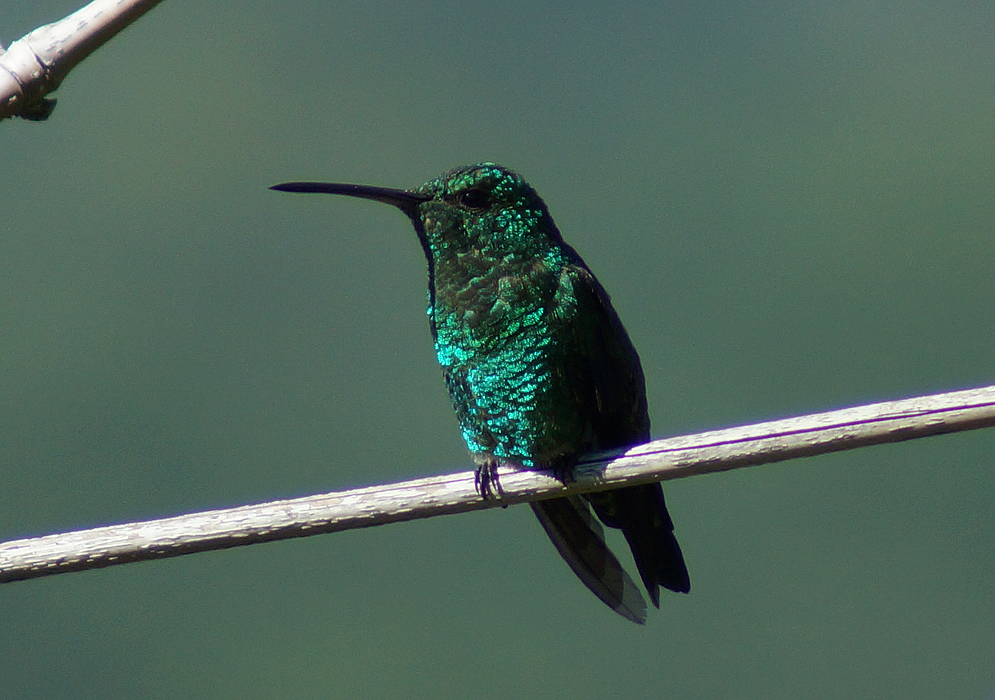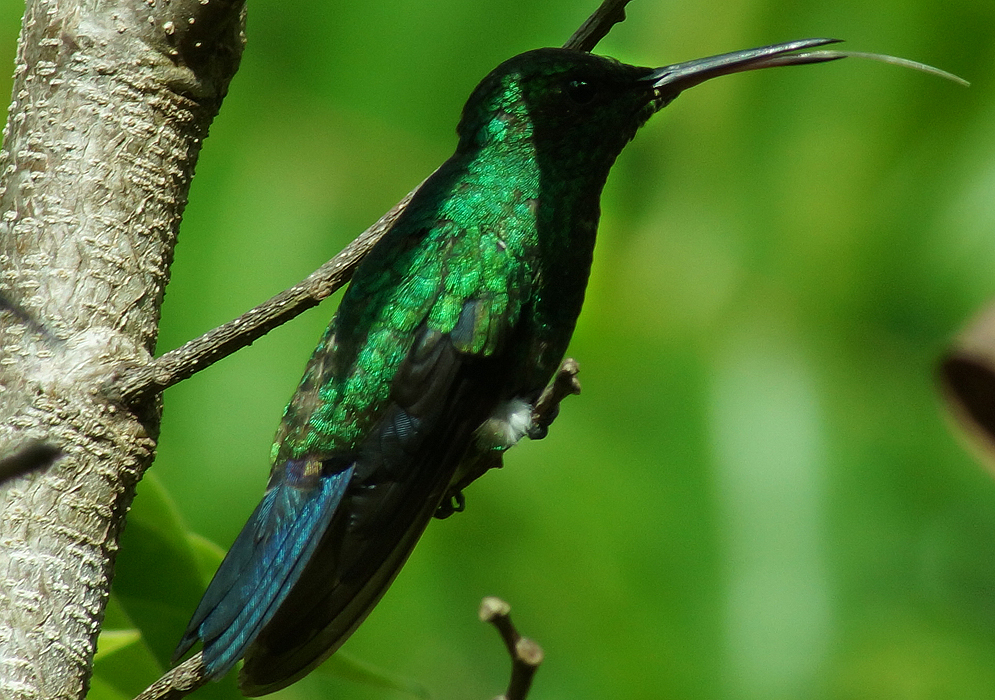This post has 11 Simple Fields-fields attached. Show fields.

The Western Emerald is a species of hummingbird, primarily found in Colombia and Ecuador. It belongs to the "emeralds" tribe Trochilini within the subfamily Trochilinae. This bird is characterized by its compact size, measuring between 4.3 to 4.5 inches in length and weighing approximately 0.092 ounces. Both sexes possess a short black bill. The male boasts an iridescent green forehead and crown with gold highlights, a bright green face, bronzy green upperparts, and a steel blue tail. Its underparts shimmer in emerald green with a blue tinge on the breast, highlighted by white thigh tufts. The female, on the other hand, displays a bronzy green forehead and crown, a blackish face with a pale gray spot behind the eye, metallic grass green upperparts, and a blue-black tail with white tips. Her underparts are pale gray to white with a buffy tone on the throat and belly. In terms of habitat, the Western Emerald is found from the Western Andes of Colombia south into Ecuador. The subspecies C. m. melanorhynchus inhabits the upper subtropical zone of Colombia and the temperate zone in Ecuador, while C. m. pumilus is found at lower elevations, in arid and semi-arid tropical and subtropical zones. In Colombia, it ranges between elevations of 3,300 and 6,600 feet, and in Ecuador, it is mostly found between 2,000 and 5,900 feet, although it can be found as low as sea level and as high as 10,000 feet. The Western Emerald inhabits open to semi-open landscapes such as the edges and clearings of mature forests, plantations, cultivated areas, fields, and gardens. Interestingly, urbanization seems to have a positive impact on this species. Expansion of urban parks, gardens, and settlements into the bird’s coastal habitat has increased habitat area and nectar flower availability, contributing to its large range and increasing population trends. As a result, the Western Emerald is considered a species of least concern by the International Union for Conservation of Nature (IUCN). It's adaptable to various habitats including suburban parks and gardens, particularly those with flowering plants that provide nectar. Its preferred habitat includes drier woodlands rather than dense, damp forests, and it can be found in oak woodlands at lower elevations but more commonly resides between sea level and 6,000 feet elevation. It is a generally sedentary species but might make limited seasonal elevational changes. Despite its resilience and adaptability, the Western Emerald faces threats from pesticide use, which depletes its insect food sources. Nevertheless, it remains a common species across its range, illustrating its ability to thrive even in the face of human environmental impacts. Photographed in the Sierra Nevada de Santa Marta,Colombia.



